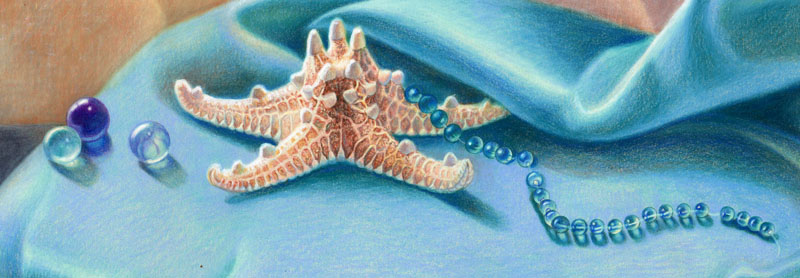
5 tips drawing glass in colored pencil
In this post I’d like to explain the basics of drawing glass and other glass-like, transparent or reflective objects in colored pencil. At the end of this article you’ll find additional resources such as my online video course and drawing demonstrations that will give you more colored pencil drawing ideas on how to draw glass.
Drawing crystal or glass or other reflective surfaces is not as difficult as you may think once you understand the basic principle behind it. Observation is key!
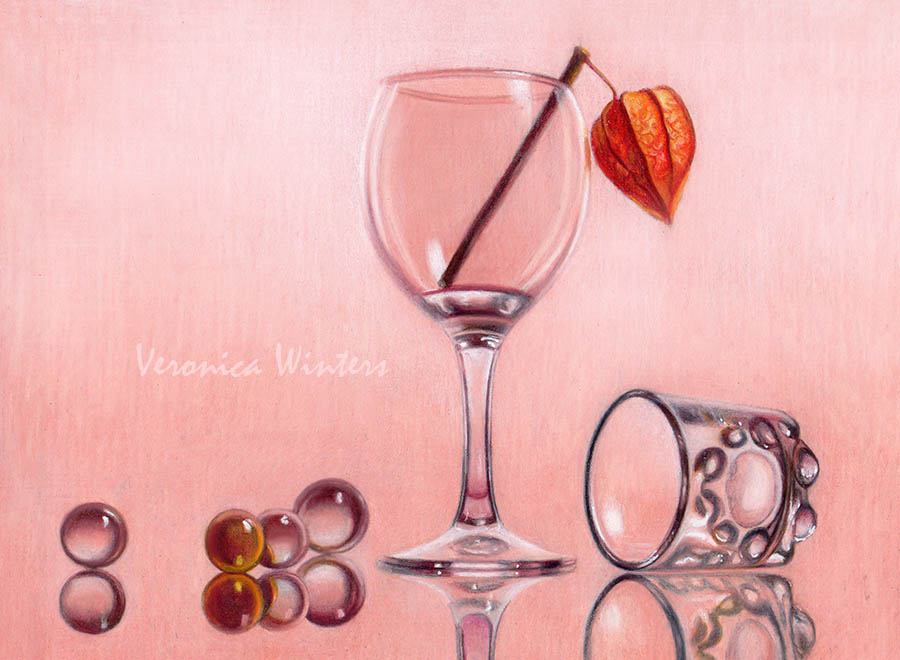
How to draw glass: tip #1 | Symmetry & ellipses
The accuracy of shapes is the first important element in colored pencil drawing of any surface like a wine glass or cup. When you draw the wine glass, the shape of the wine glass itself must be perfect or very accurate having symmetrical sides and correct ellipses.
In the beginning, it’s a very laborious process to get the accurate drawing of shapes but overtime you’ll become a better draftsman, and it will be much easier to keep the shapes accurate, even and symmetrical. Therefore, to draw realistically, you must strive for achieving the most accurate shape (outline) of your drawing.
The overall shape of the object mustn’t be crooked or uneven.
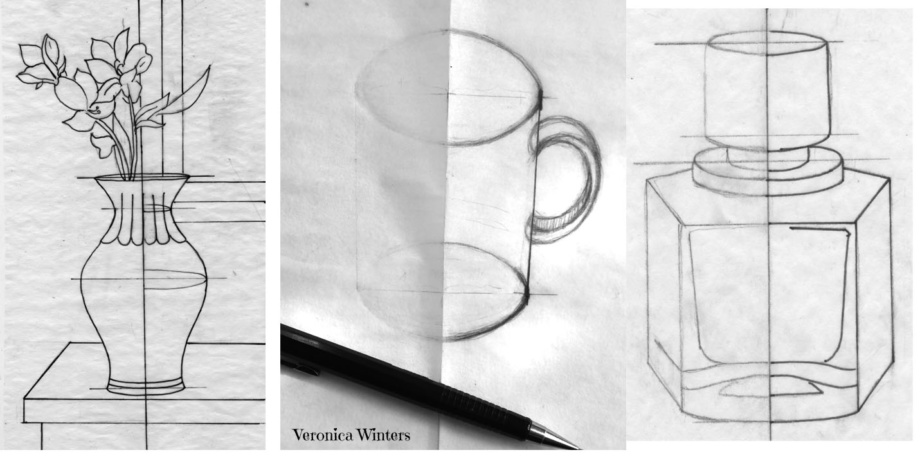
Why don’t we just transfer the outlines right from a reference using a window light or a light table? Camera lens distort reality and produce crooked forms. If you use a zoom lens, sometimes you can almost see a fish-eye effect that is very noticeable on linear objects and architecture. Don’t be a slave to your camera.
How to draw glass: tip #2 | General pattern
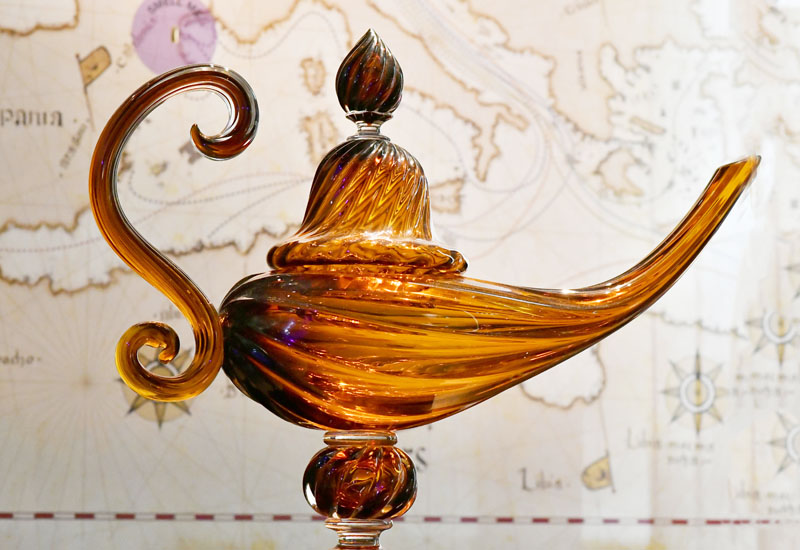
In colored pencil drawing of glass and crystal you should aim to break it down to general pattern first and then fuss over the details. See if the crystal glass has patters with ray cuts, squares, etc. You want to be perfect at repeating this pattern as it curves around the form. Only after that you look at the abstract shapes and colors found within this pattern.
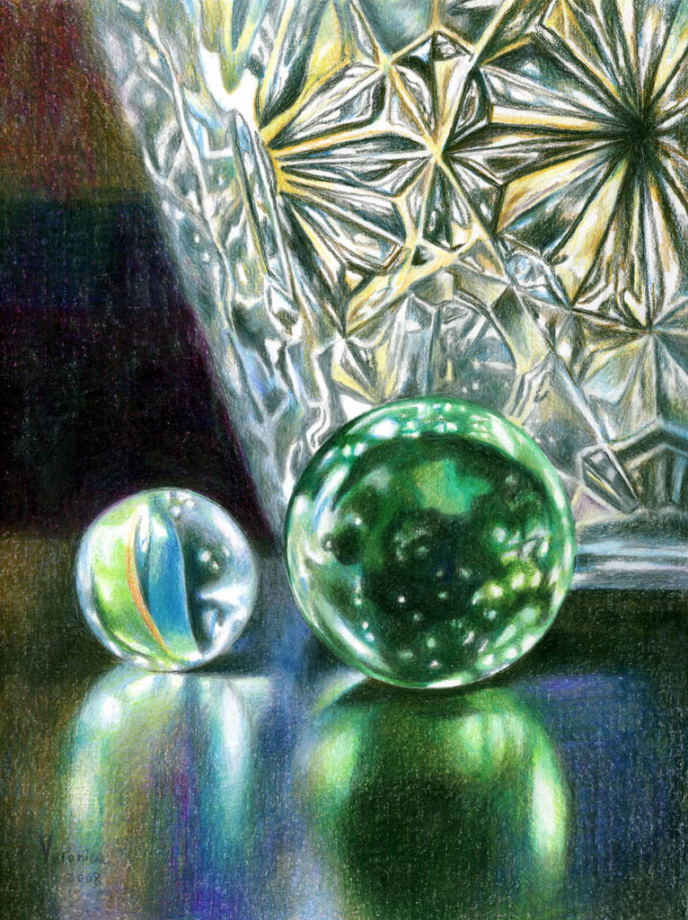
Your aim is to copy the largest shapes found within the design of glass object. It makes sense to either draw big, so it will be easy to put all the abstract designs you see in your colored pencil drawing of glass, or pick a crystal vase with a very simple pattern you can copy in art.
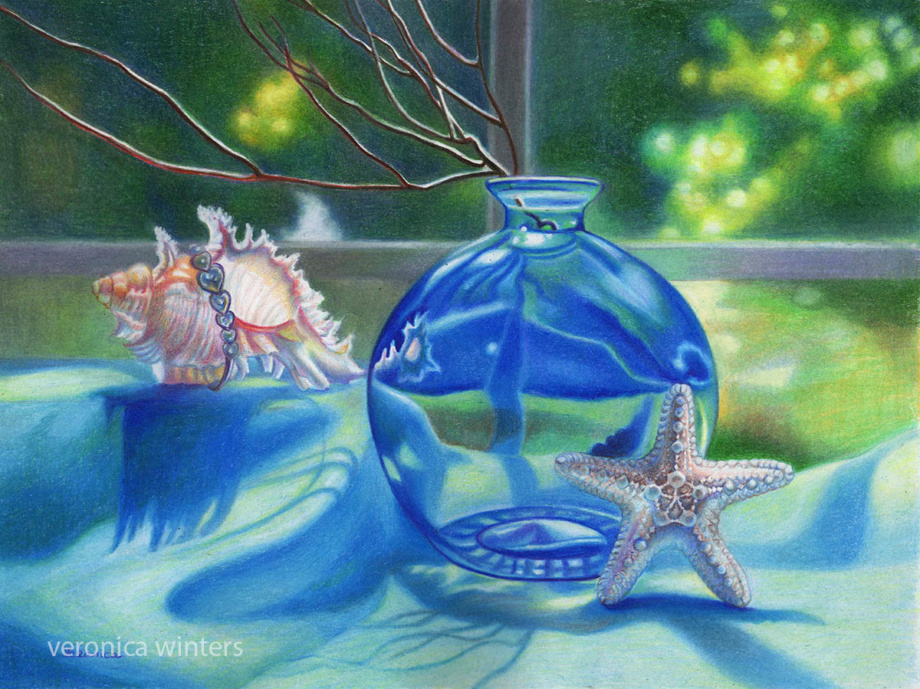
Always try to find major abstract shapes within the vase or glass. Copy those shapes as precise as possible. Usually these are distortions, patterns or color movements either inside the glass or on its surface.
How to draw glass: tip #3 | Color behind the glass
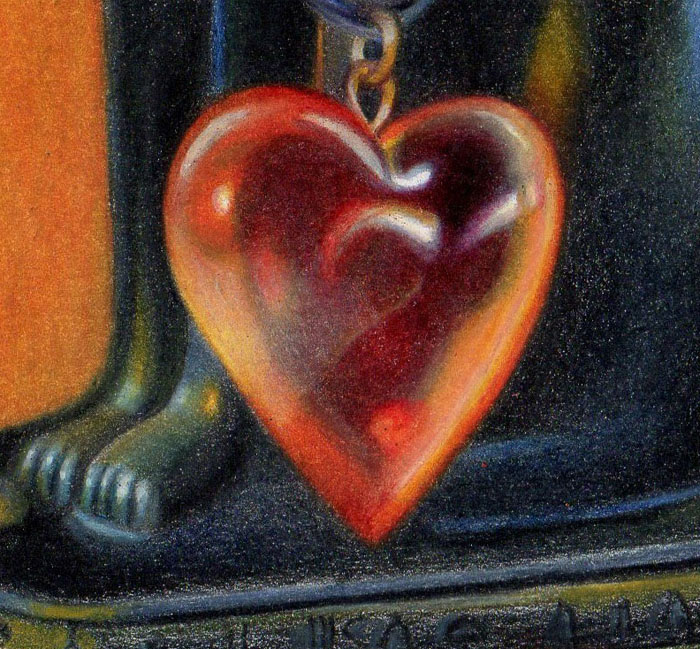
Glass surface always reflects something behind and around it. So colors of the background must be very similar to the ones inside the wine glass/ glass vase/ glass object. Color intensity could very though.
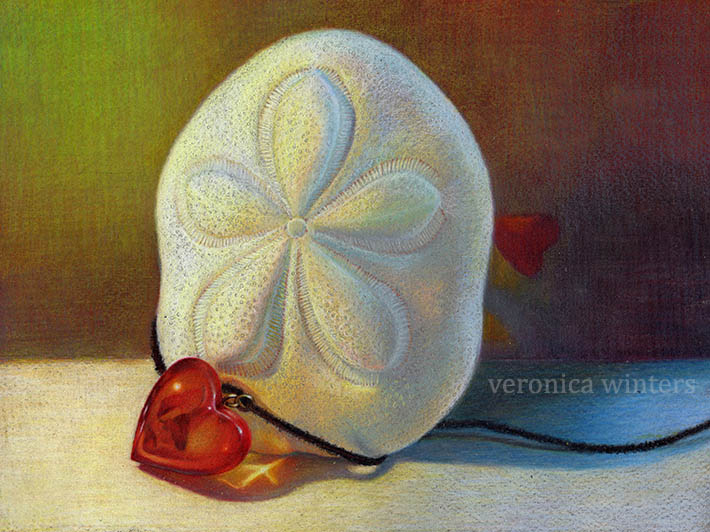
How to draw glass: tip #4 | Soft colored pencil shading
Colored pencil drawing of glass requires soft shading. Lines must be short not to flatten out the shape. To create volume in the glass vase or wine glass, pay attention how abstract shapes found on the surface curve and wrap around the object.
Curve lines. Shade softly with short, overlapping strokes. Don’t make lines and shapes inside the vase or glass too straight because it flattens out the object. But if you have a bottle with straight sides, these lines must stay nice and straight.
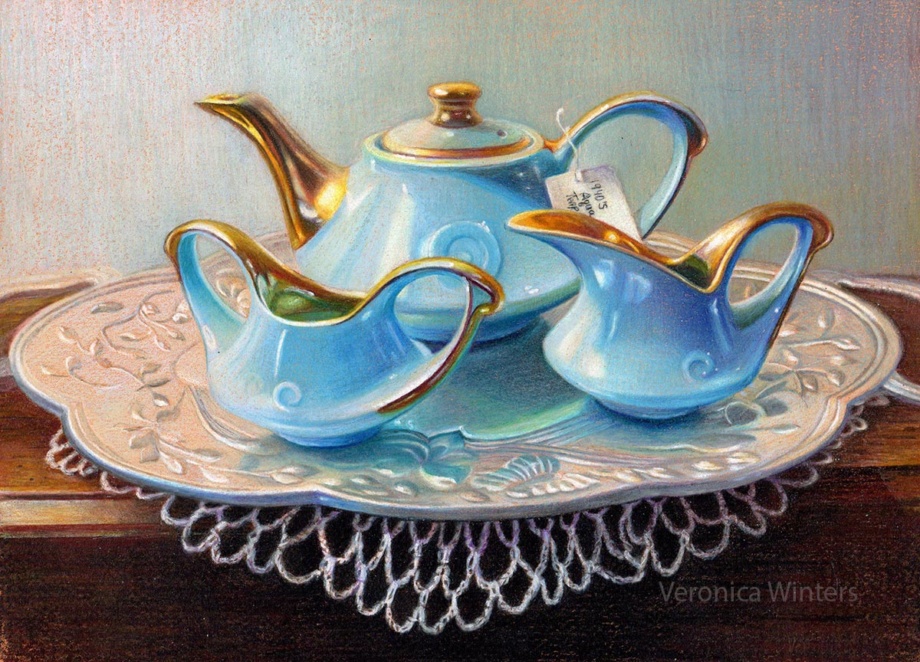
Always try to improve your shading by placing tight, overlapping strokes. Don’t rely on fixing the unevenness of your shading with the blender. Rotate your paper to place the pencil strokes in the right direction. One of my favorite colored pencil brands is Caran D’ache Luminance because they’re very soft, durable, lightfast and blend exceptionally well simply by shading tightly or crosshatching with them. They’re very pricey but can make a great gift for every colored pencil artist.
How to draw glass: tip #5 | Blending
Glass has no texture. To imitate this glass-like surface colored pencil blending becomes key. Sometimes you don’t need extra blending if you shade with sharp pencils overlapping, crosshatching or moving in circles to create tight shading. Paper’s texture has a lot to do with it. Paper must be smooth with just a bit of paper tooth to adhere the colored pencil to. If your drawing paper has lots of texture, then blending is necessary.
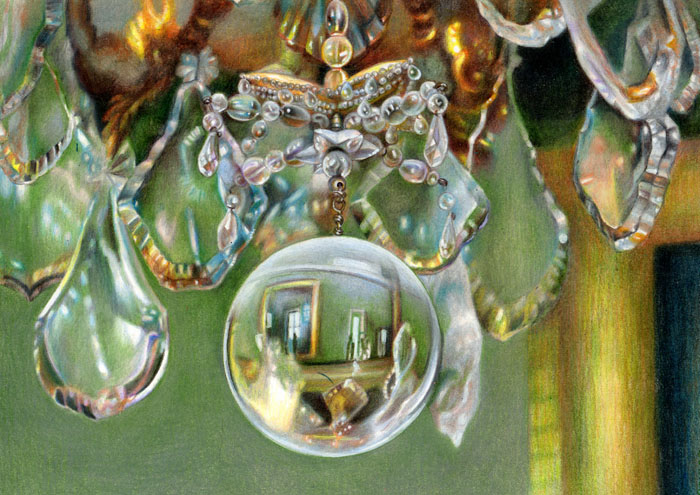
To imitate the smoothness of glass I shade everything with heavy pencil pressure. Usually I don’t use the blender. If you think your shading is not complete without additional blending, use Caran d’Ache full blender at the very end. Blend everything where you don’t want to see any texture. Glass vase has no texture but flowers sticking out of it might have some texture, for example.
Putting it all together
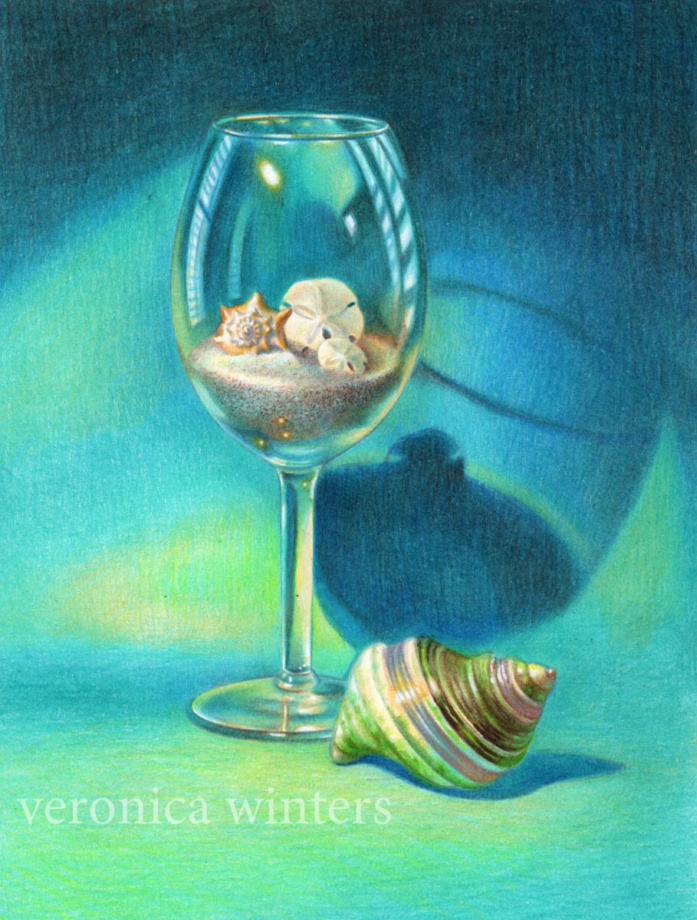
Step back and look at your colored pencil drawing of glass from a distance. Is the overall shape of the wine glass correct? Do you have enough variation in values ranging from light to dark? These are potential places to fix things. Is glass smooth with nice transitions? Do you have strong highlights?
Oftentimes the blending step is not the last one in drawing of glass. Additional layering may be necessary to tweak the values or to soften the edges. When the surface becomes too waxy and doesn’t accept any more pigment, spray it with a fixative for dry media (I recommend Grumbacher). Let it dry and try shading it once again.
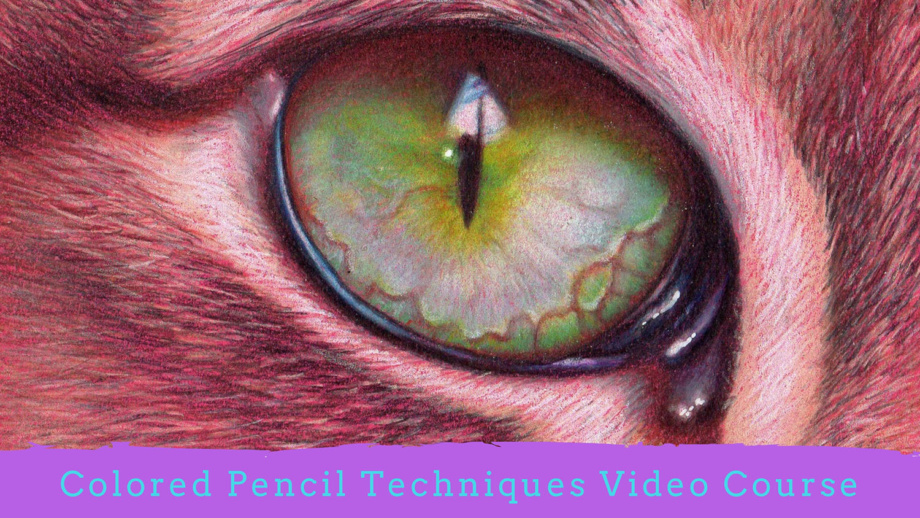
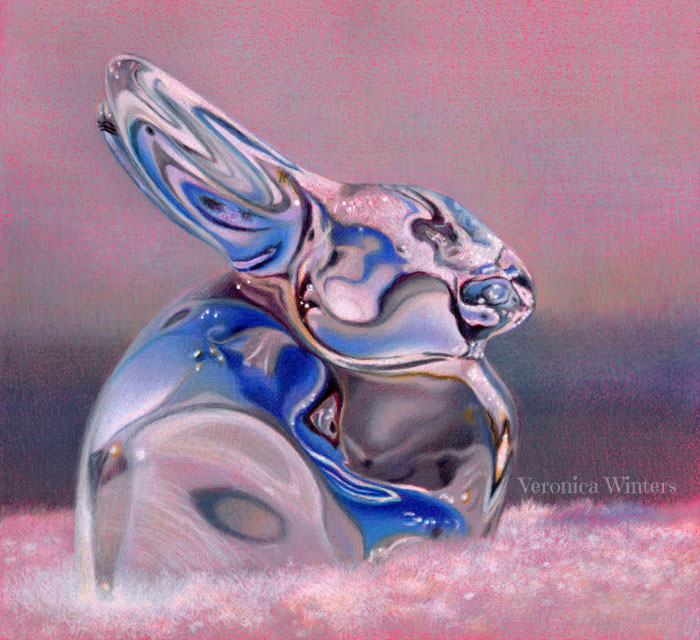
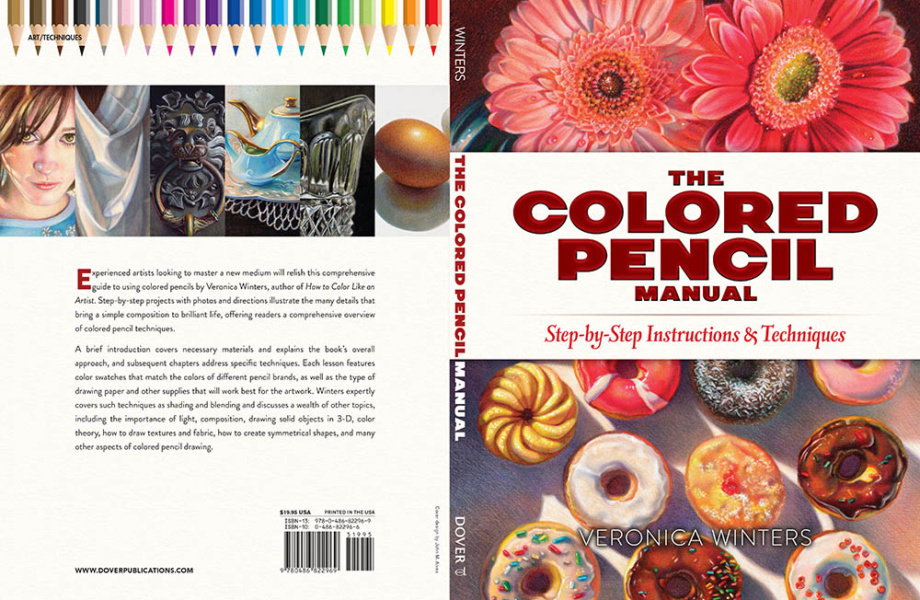
The Colored Pencil Manual art instruction book: https://amzn.to/3fRpoEb
How to Color like an Artist art coloring book: https://amzn.to/2LtH0Iq